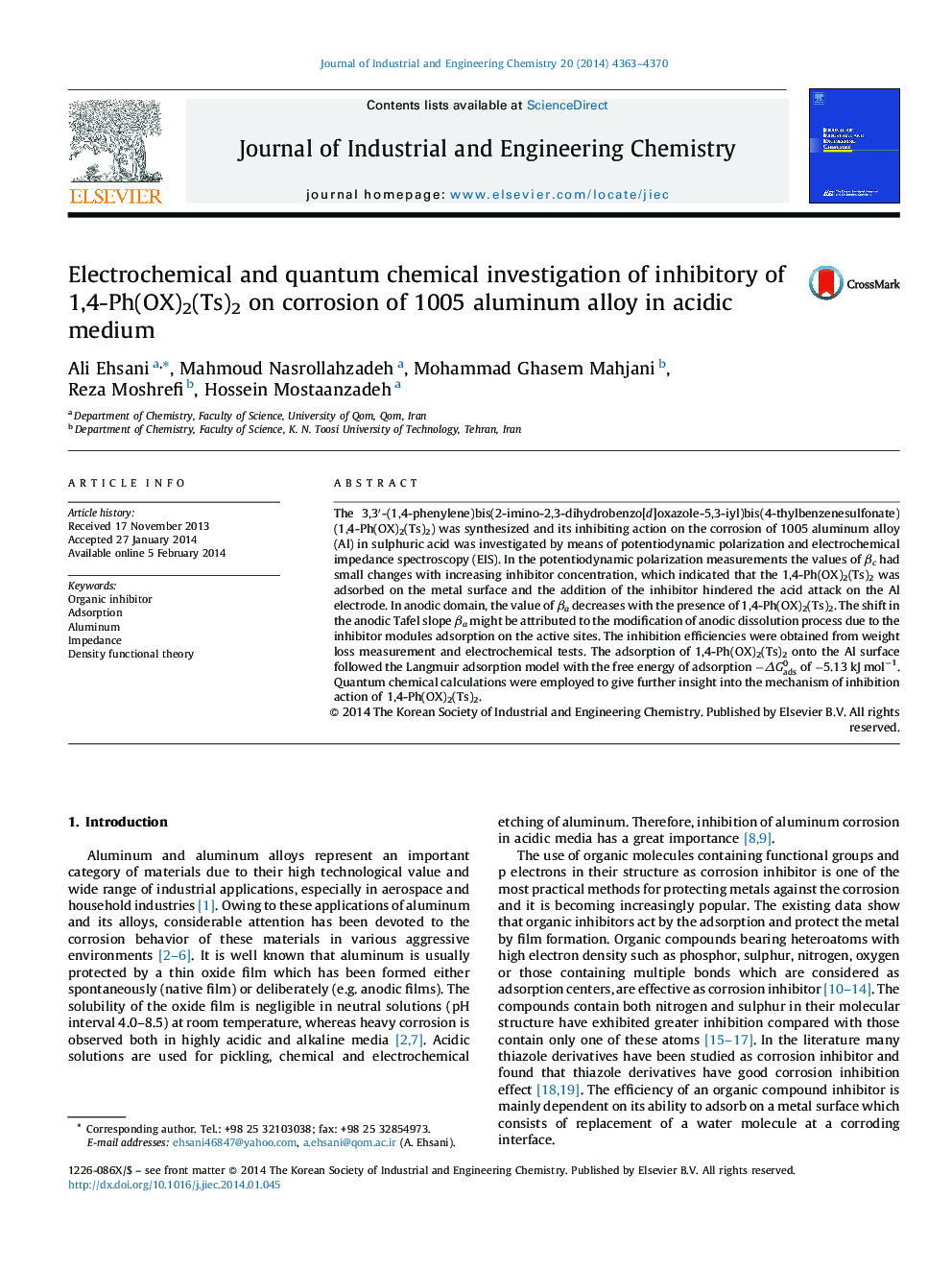| Article ID | Journal | Published Year | Pages | File Type |
|---|---|---|---|---|
| 227572 | Journal of Industrial and Engineering Chemistry | 2014 | 8 Pages |
The 3,3′-(1,4-phenylene)bis(2-imino-2,3-dihydrobenzo[d]oxazole-5,3-iyl)bis(4-thylbenzenesulfonate) (1,4-Ph(OX)2(Ts)2) was synthesized and its inhibiting action on the corrosion of 1005 aluminum alloy (Al) in sulphuric acid was investigated by means of potentiodynamic polarization and electrochemical impedance spectroscopy (EIS). In the potentiodynamic polarization measurements the values of βc had small changes with increasing inhibitor concentration, which indicated that the 1,4-Ph(OX)2(Ts)2 was adsorbed on the metal surface and the addition of the inhibitor hindered the acid attack on the Al electrode. In anodic domain, the value of βa decreases with the presence of 1,4-Ph(OX)2(Ts)2. The shift in the anodic Tafel slope βa might be attributed to the modification of anodic dissolution process due to the inhibitor modules adsorption on the active sites. The inhibition efficiencies were obtained from weight loss measurement and electrochemical tests. The adsorption of 1,4-Ph(OX)2(Ts)2 onto the Al surface followed the Langmuir adsorption model with the free energy of adsorption −ΔGads0 of −5.13 kJ mol−1. Quantum chemical calculations were employed to give further insight into the mechanism of inhibition action of 1,4-Ph(OX)2(Ts)2.
